Choosing the Right
Timber for Your Deck
Selecting the right timber for your deck is a crucial decision that impacts the longevity, aesthetics, and maintenance requirements of your outdoor living space. This guide compares three popular decking materials—pine, kwila, and mahogany—to help you make an informed decision for your project. We'll explore the benefits and drawbacks of each timber type, focusing on factors like durability, stain absorption, and resistance to wear and tear. Read on to discover which decking material best aligns with your needs and preferences, ensuring a beautiful, functional, and long-lasting outdoor space for you to enjoy.
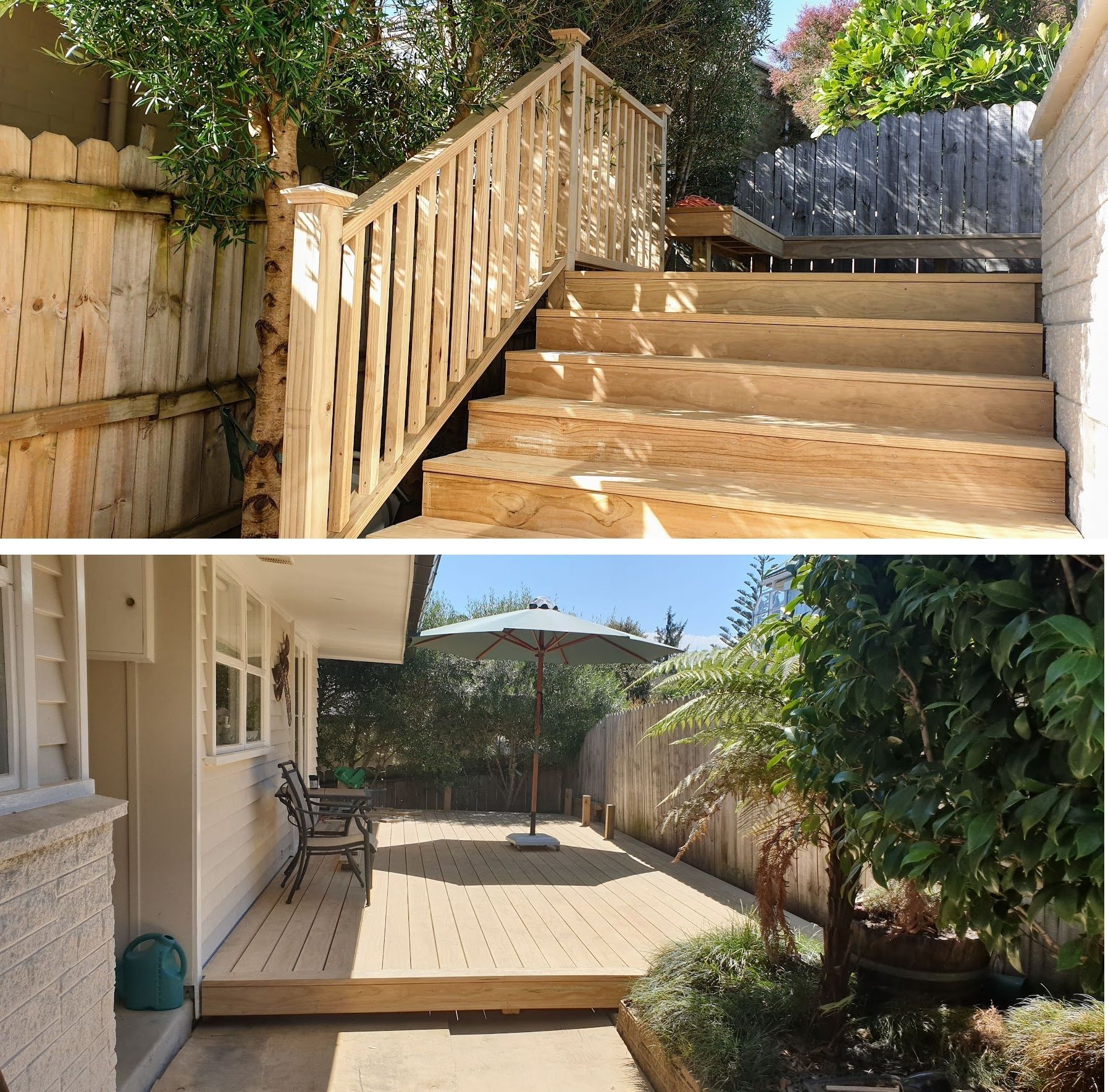
Pine Wood Decking
Pros of Pine Wood Decking
- Excellent Stain Absorption: Pine wood decking is known for its ability to absorb stains exceptionally well. This quality allows for a wide range of color options, giving you the flexibility to customize the look of your deck.
- Durable with Proper Care: When properly maintained, pine wood decking can be quite durable, lasting for many years. Regular cleaning, sealing, and staining will help protect your deck from the elements and prevent decay.
Cons of Pine Wood Decking
- Softwood Vulnerabilities: Being a softwood, pine is more susceptible to dents, scratches, and wear compared to hardwoods. It may also be prone to warping or splitting if not properly treated or installed.
- Regular Maintenance Required: Pine decking requires care, including regular sealing and staining, to maintain its appearance and durability.
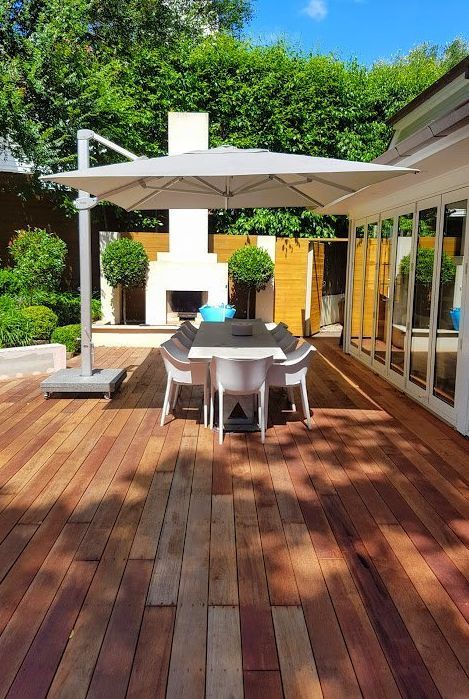
Kwila Decking
Pros of Kwila Decking
- Hardwood Durability: Kwila, also known as Merbau, is a hardwood known for its strength and durability. It is resistant to dents, scratches, and wear, making it an excellent choice for high-traffic outdoor areas.
- Natural Resistance: Kwila decking has a natural resistance to decay, termites, and fungi, reducing the need for chemical treatments.
Cons of Kwila Decking
- Stain Retention: Unlike pine, kwila decking is not as efficient at absorbing stains. This can limit the color choices and may require more frequent reapplication to maintain the desired appearance.
- Color Bleeding: Kwila's natural tannins may cause the wood to bleed color, especially when new. This can stain surfaces below the deck and may require additional cleaning and maintenance.
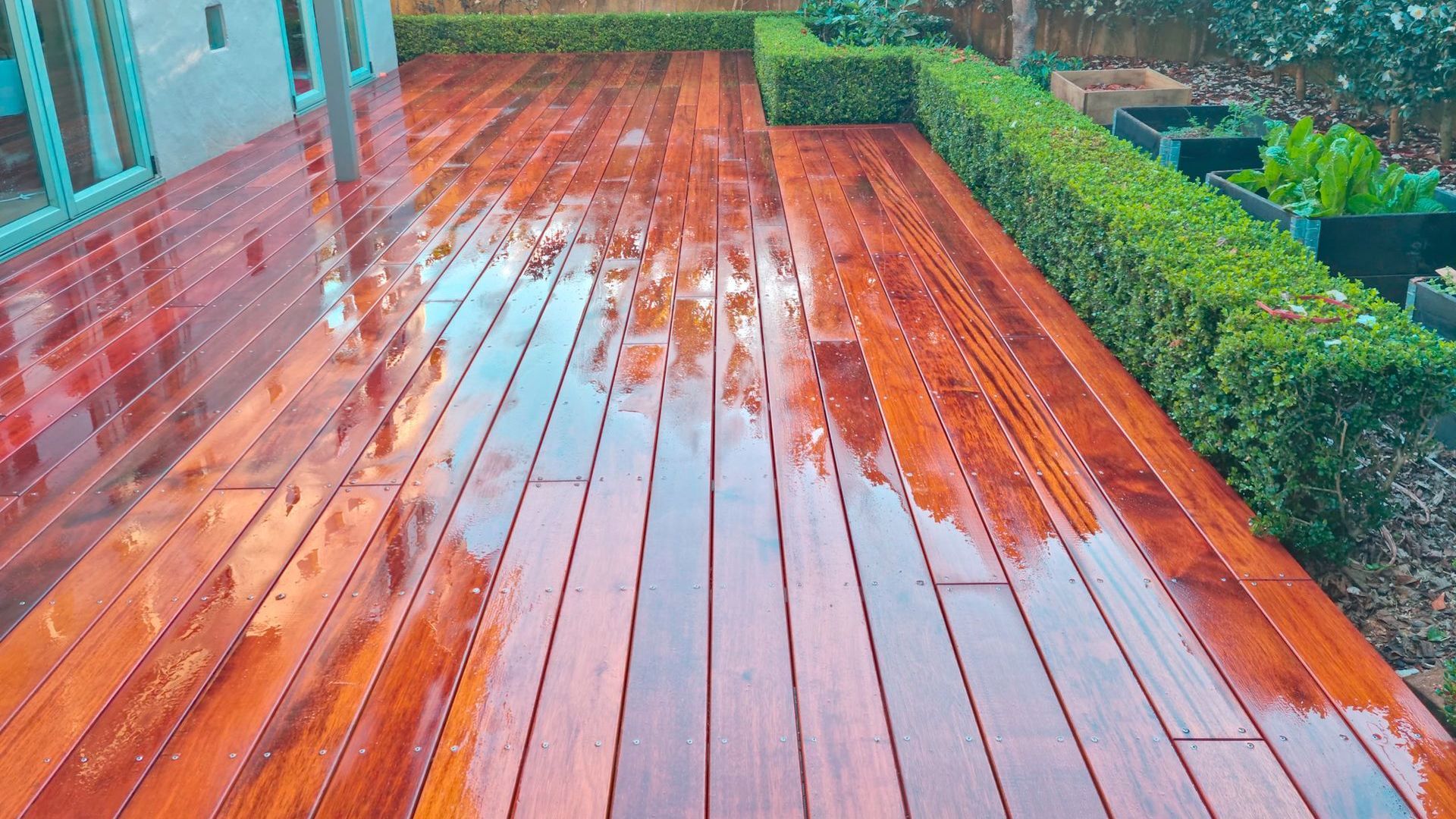
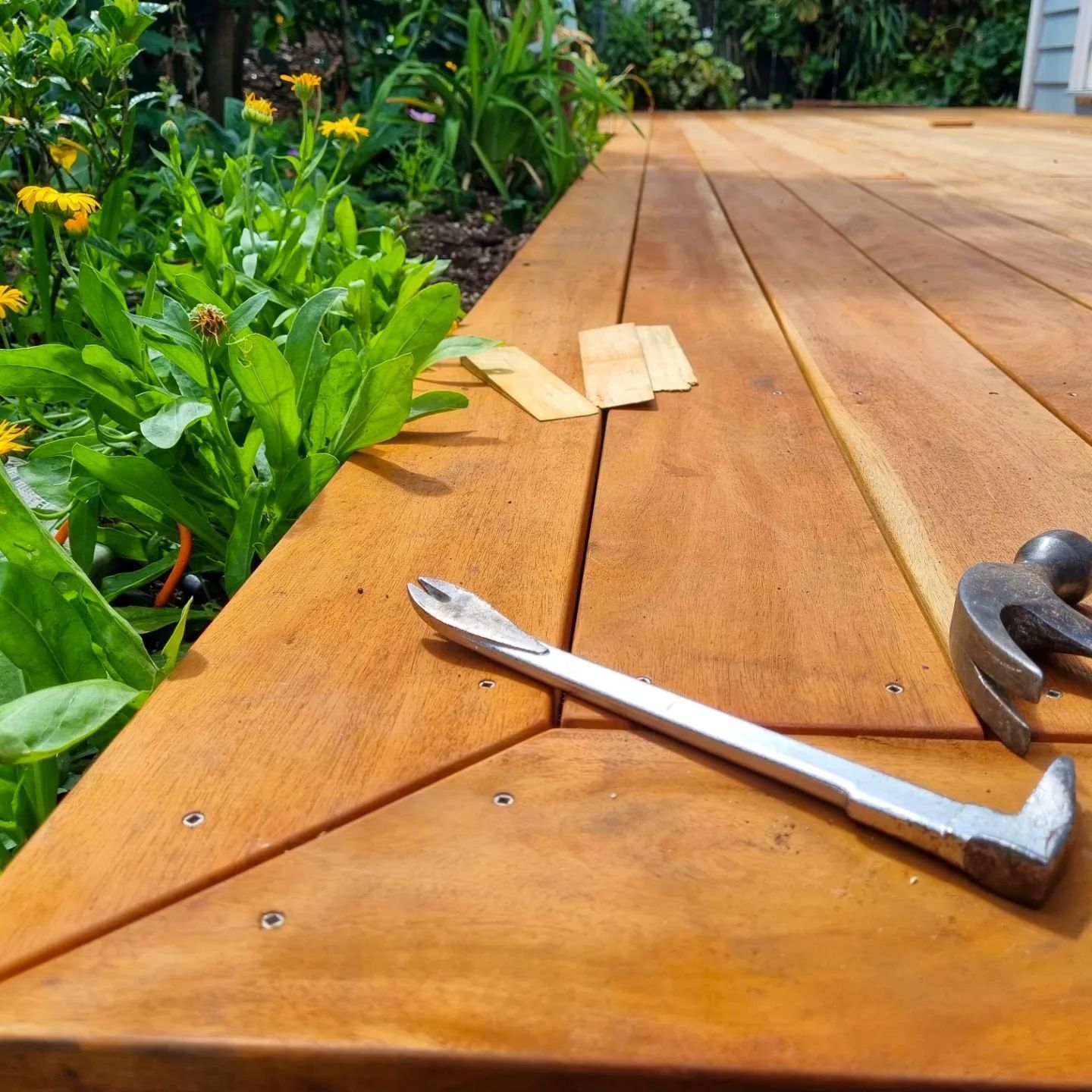
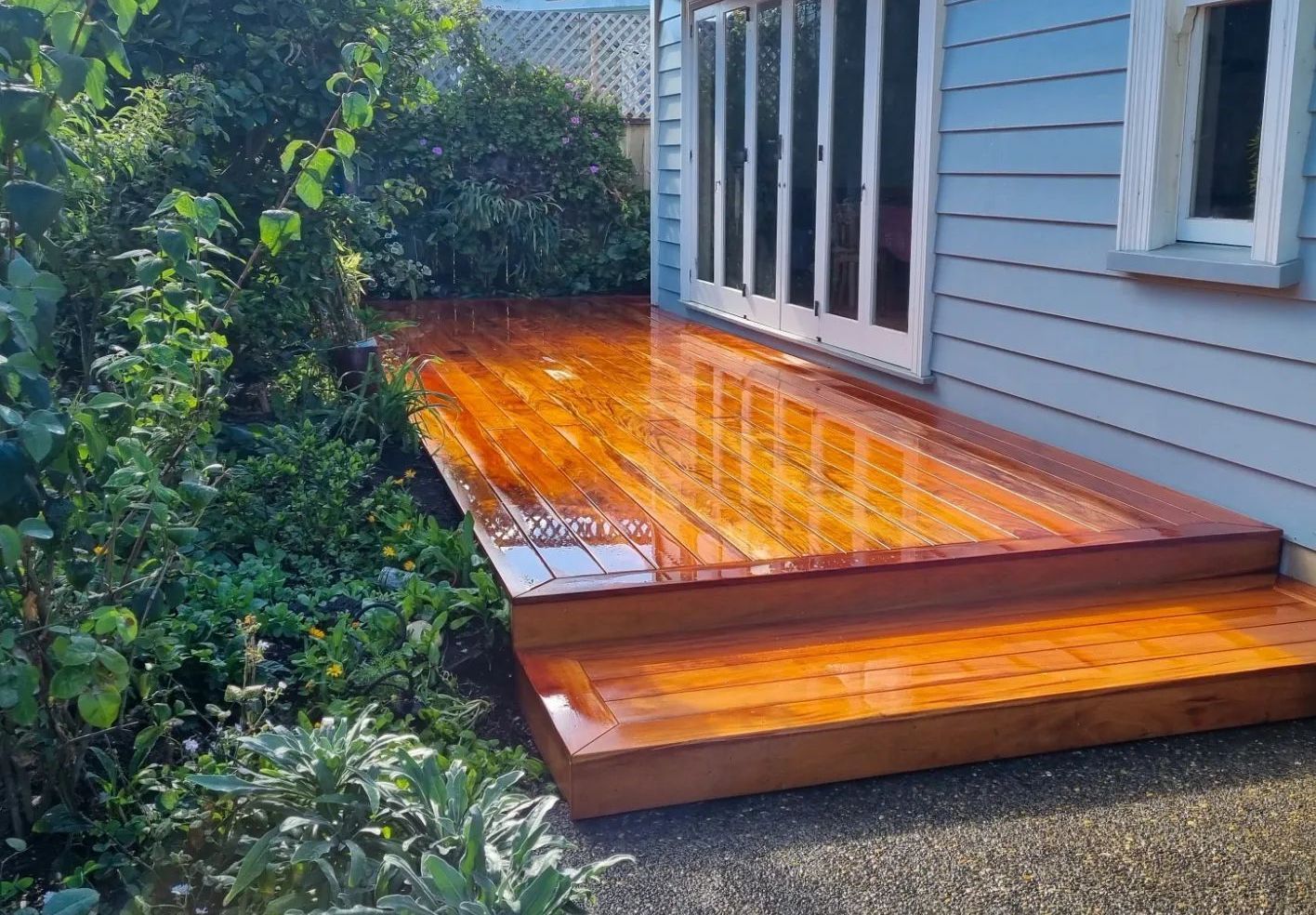
Mahogany Decking
Pros of Mahogany Decking
Aesthetic Appeal: Mahogany decking is prized for its rich, reddish-brown color and beautiful grain patterns. It adds a touch of elegance and luxury to any outdoor space.
Durability and Stability: Mahogany is a hardwood that offers both durability and stability. It is resistant to warping, cracking, and splitting, making it a long-lasting option for decking.
Cons of Mahogany Decking
Higher Cost: Mahogany decking can be more expensive than other timber options due to its premium quality and limited supply.
Environmental Concerns: Some species of mahogany are endangered, and sourcing sustainable or certified mahogany can be challenging. It's essential to verify that the mahogany you purchase comes from a responsible supplier.
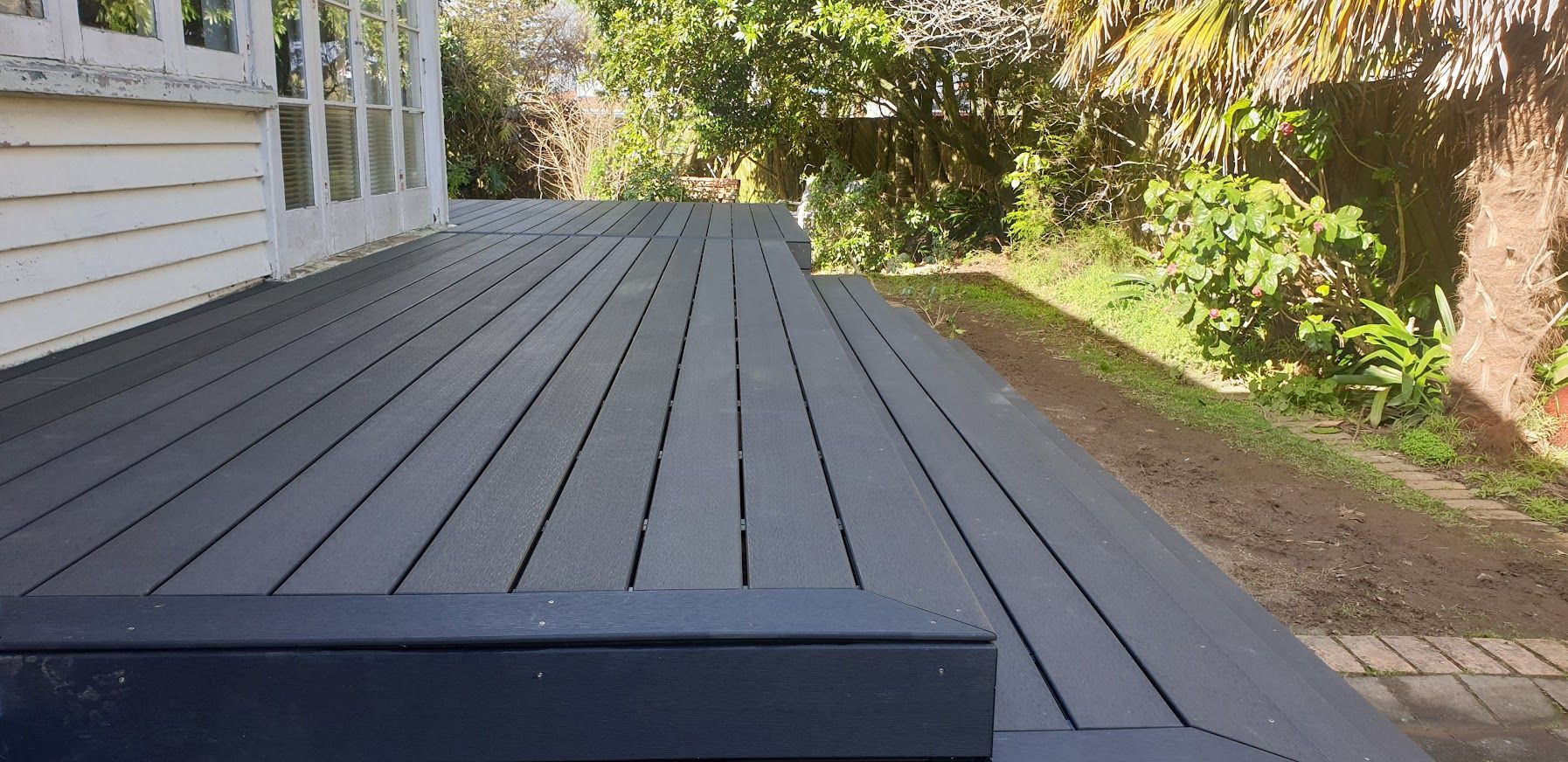

Composite Decking
As a non-timber option, composite decking has garnered significant interest due to its unique properties and low-maintenance features. We've included information about composite decking to address the common questions we receive from our customers and provide a well-rounded comparison of decking materials.
Pros and Cons of Composite Decking:
Composite decking, made from a blend of wood fibers and plastic materials, is an alternative to traditional timber decking. While it has some advantages, such as being low-maintenance and resistant to rot, our experience with composite decking has been mixed.
We found that it was easy to install and visually appealing, but we encountered issues with the movement due to temperature changes compared to traditional wood. This movement can cause the decking to split, delaminate, peel, shrink, warp, twist, and bend and becoming uncomfortably hot during the summer months. As of now, we do not recommend composite decking due to these concerns. However, the industry is continually evolving, and we remain optimistic that improved, high-quality composite decking products with fewer issues may become available in the future.
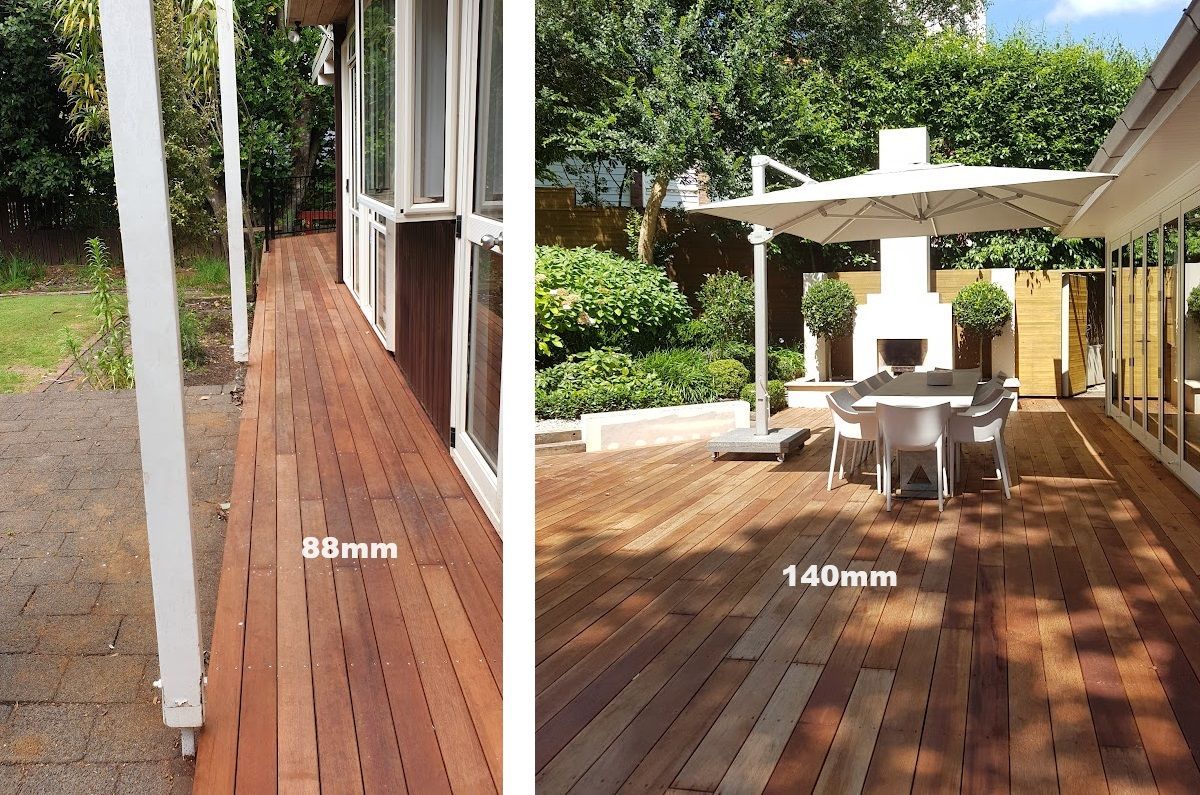
Decking Sizes and Aesthetic Appeal
When selecting decking, the size of the boards plays a significant role in the overall look and feel of your outdoor space. Traditional decking often uses 88mm wide boards, which offer a classic appearance. However, a growing trend is the use of wider 140mm boards, available in thicknesses ranging from 19mm in hardwood to 32mm in pine. The same thickness options are also available in the 88mm size. The choice between smaller and wider decking boards is largely a matter of personal preference, just like selecting the color and style. Some homeowners prefer the sleek look of narrower boards, while others favor the bold statement of wider decking.
The choice of timber for your deck depends on factors like durability, stain absorption, maintenance requirements, and aesthetic preferences. Weigh the pros and cons of pine, kwila, mahogany and composite decking to determine the best option for your unique needs.
Article by Geoffrey Budge

